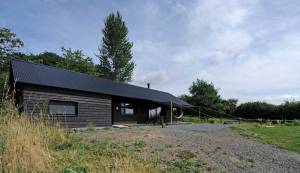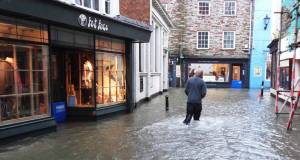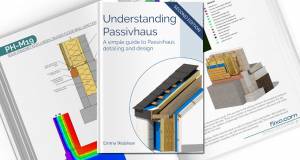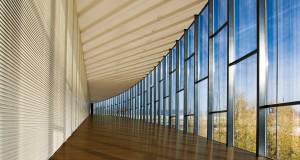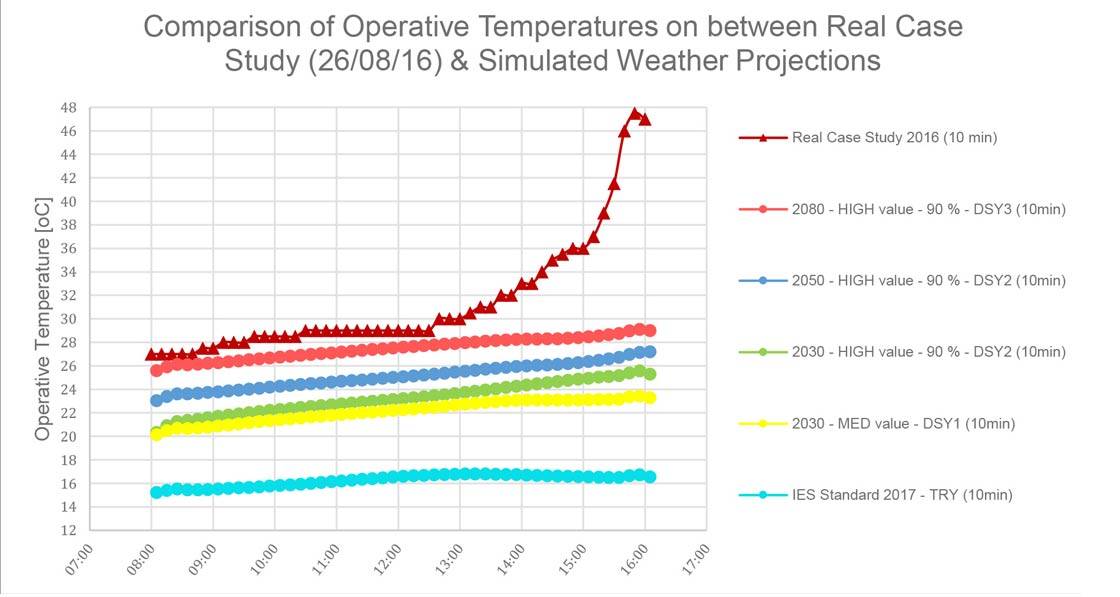
- Design Approaches
- Posted
Study: extreme overheating not reflected in building simulations
Dangerous overheating in buildings may not be showing up in desktop studies, new research suggests.
This article was originally published in issue 26 of Passive House Plus magazine. Want immediate access to all back issues and exclusive extra content? Click here to subscribe for as little as €10, or click here to receive the next issue free of charge
Monitored operative temperatures of up to 47.5C recorded in a highly glazed apartment building in London were not reflected in software modelling of the same building, with temperature peaks in simulated scenarios between 18C and 30C cooler, depending on which weather files were used.
In 2016, London Southbank University (LSBU) researchers monitored the apartment building in Camden, which was reported to be overheating.
Converted from a factory, overheating in the highly-glazed southwest-facing units became apparent during the renovation – with workers reporting that the temperatures were affecting materials and methods on-site.
“When the building was left unoccupied for 5-6 weeks, the building manager found that the waste pipe water had evaporated leaving no protection against odour ingress from the sewage system,” noted the study. The British Blind and Shutter Association (BBSA) was approached to advise on the impact shading could have on comfort levels within the building – research which was then led by Zoe De Grussa and colleagues from LSBU.
The researchers began monitoring two identical apartments in the untenanted building – on the first floor & directly above on the second floor of the four-storey building – choosing two bedrooms in each case. One room was left unshaded, while blinds were fitted in the others – internal and external 80mm aluminium venetian blinds, internal and external screen fabric roller blinds, and an internal reflective screen fabric roller blind. Double glazed windows with a stated U-value of 1.1 had been installed as part of the retrofit. “No g-value was given by the building developer but the glazing specifier advised that the glazing alone would be adequate to control the solar gains on all façades,” the report notes. Windows and internal doors in the otherwise unventilated apartments were left open from 4:30pm till 8am each day to allow passive night cooling, and data was logged and analysed from 16 days between August and October 2016 – including indoor temperatures and external air temperatures.
On day three, when the peak external air temperature was 27.9C, the peak operative temperature in the unshaded room was 47.5C – while a room with external aluminium venetian blinds at 45° peaked at 29C, and rooms fitted with internal venetians and screen fabric recorded peaks of 34.5C and 32C respectively. On days nine to eleven, when external temperatures peaked at between 20.1 and 21.4C, operative temperatures in the unshaded control room peaked at between 42 and 45C – indicating extreme temperatures may be reached in comparatively mild summer conditions.
A follow-up desktop study by an LSBU team led by Luigi Venturi was conducted on the same building, using the IESVE software, with the results presented at a CIBSE Technical Symposium in London on 12-13 April. The model simulated conditions in the unshaded control room, with internal venetian blinds assumed in the other three rooms, as the software doesn’t allow for moveable external shading. A g-value of 0.4 was assumed for the glass.
A 2017 Test Reference Year (TRY) weather file from IES was put into the model alongside UK Climate Projections Design Summer Year (DSY) weather files for 2030, 2050 and 2080. The results for operative temperature projections in the unshaded room are striking: the IES simulated peaks are up to 30.77C lower than the monitored peak where the 2080s weather projections are 18.39C lower.
The author of the study acknowledges that when reviewing overheating in buildings it is unreliable to use TRY weather data and a DSY should be used as it includes predictions of future overheating weather events as recommended by CIBSE TM59.
The study also found that when 2080 projected external air temperature peaked at over 41C, the unshaded room was predicted to peak at under 38C – nearly 10C cooler than the logged 2016 data.
The BBSA commissioned a report by an energy modeller at the National Energy Foundation (NEF), including quality assurance on the LBSU model and a sensitivity analysis on shading configurations from software-maker IES, which found that adjusting the input for shading to minimum and maximum values changed the end result by less than 2C.
Passive House Plus contacted IES, who reviewed the LSBU model and associated NEF report. An IES spokesperson said: “The report alerted the modeller to a series of issues present in the LSBU model and it is unclear whether these have been fully and properly addressed before collating the results that are used in the LSBU study. The model received by IES does not appear to have included these recommendations.
“When publically [sic.] communicating the findings from studies like these, it is crucial the modelling has been independently reviewed by a competent authority and any recommendations addressed otherwise the findings can be misleading. In our checks we could find no evidence that such a review has been carried out and on the basis of our own model review IES do not believe that this study should be used as a reliable benchmark for simulation model accuracy, as a critique of the simulation model’s capability to predict future performance or to calibrate model results against existing building performance.”
Passive House Plus issued a number of follow-up questions to IES including: whether IES would share its model review; what issues IES had found with the LSBU model and what their respective and cumulative effects were; whether IES has modelled the building itself and if so, what results it had found; whether there are any points raised in the NEF report that the LSBU didn’t act upon, and which may have substantially impacted the results; whether a difference of less than 2C was a fair reflection of the difference between the presence or absence of shading; and whether IES regards NEF as a competent authority to conduct a review of these studies, and the associated modelling. IES declined to comment.
Ireland’s Department of Housing recently went to consultation on proposals to bring new homes up to nearly zero energy building (nZEB) standard, as required by the EU’s recast energy performance of buildings directive. The IESVE software was used by the engineering firm AECOM to assess overheating risk in five example homes, in accordance with CIBSE’s TM59 methodology. AECOM noted “marginal exceedances” in four of the nineteen rooms modelled, and proposed mitigation strategies of occupants controlling curtains or blinds when solar radiation is high.
BBSA technical group chair David Bush warned that with EU countries amending building standards to meet nZEB levels, many of the limitations of calculating shading and the assumptions made will be replicated. “We can make the case as in France and Norway that a minimum g-value of 0.15 should be achieved, but if the algorithms of the weather patterns in the model say it will not overheat the problem remains.



